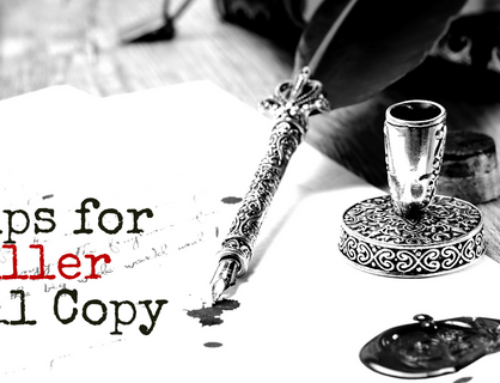Consumers always judge a book by its cover. And in this case, subject lines are the cover of your emails. Subject lines will either convince people to open your emails or convince them to click that little trash can icon in the corner.
A whopping 64% of consumers open an email because of the subject line.
With the increasing volume of emails received daily, people tend to skim through their inboxes and delete irrelevant or spammy messages. A well-crafted subject line can grab the recipient’s attention and entice them to read the email.
So, what’s the secret formula to writing subject lines? Unfortunately, there’s no single right way to write one. Each email has a different purpose and requires its own personalized message. However, there are a few solid dos and don’ts when it comes to subject lines. Let’s jump right in.
Make It Short and Sweet
Email subject lines should be short and sweet. The goal is to capture the recipient’s attention quickly, giving them a sneak peek into the rest of the email without revealing too much. Most email clients truncate subject lines beyond a certain length, especially on mobile devices, which make up over 46% of email opens. Hubspot recommends keeping your subject lines 50 characters or less for this reason.
Besides, no one wants to read a ridiculously long subject line. Save your words for the body copy of the email.
Create a Sense of Urgency
Urgency can motivate recipients to take action. Using urgent subject lines when sending time-sensitive information, such as limited-time offers, can encourage people to take immediate action. However, it’s important to use urgency sparingly. Consumers will be less responsive to urgent subject lines if they are overused and may even start to view them as spam.
Urgent subject lines include examples like “Your coupon is expiring! ⌛” and “Only 24 Hours Left to Save 50%.” These kinds of openers make consumers feel like they have to snag your deals before the chance is gone.
Add Some Intrigue
While most email subject lines should be clear and informative, there are instances where a sense of mystery can be beneficial. Intriguing subject lines can generate curiosity and anticipation, prompting the recipient to open the email to discover what’s inside.
For example, one subject line may read, “They say we’re life-changing 💫.” Recipients will be curious to learn which of your products are “life-changing” and why. Further on in the email, they’ll find testimonials from past customers sharing their impactful experiences with your products and services.
However, make sure you’re not resorting to clickbait or deceptive tactics to lure the recipient into opening the email. The content of the email should match the promise of the subject line, and the recipient should not feel misled or disappointed.
Ask Questions
Questions are another way to tap into that sense of intrigue. The cool thing about questions is that you can ask what your consumers are thinking.
For instance, asking a question about a specific pain point or challenge the recipient is facing can signal that the email content will provide a solution or valuable insight. If you’re trying to sell your budgeting app, try a subject line like “How do I save up for a vacation?” Consumers will open your emails if they know something inside could fix their situation.
Stick in Some Stats
Using statistics in the email subject line can effectively capture the recipient’s attention and communicate the value of the email content. Statistics are compelling because they provide tangible evidence to support the claims in the email.
For example, if your email is all about the benefits of your new product or service, include a statistic that shows how many customers have benefited from it: “85% of our customers are more productive with [product name].”
Statistics can establish your credibility and expertise. Like all subject line tactics, don’t overuse them.
Avoid All Caps
“KEEP READING TO LEARN MORE ABOUT SUBJECT LINES!!!!!”
That sounded pretty aggressive and annoying, didn’t it? It wouldn’t make for a very good subject line. Using all caps in email subject lines is terrible email etiquette. People don’t like being yelled at, and all caps plus half a dozen exclamation marks can come across as spammy. Proper capitalization is simply easier to read, too.
Sprinkle in Some Emojis
Emojis can be a fun and effective way to add personality and emotion to email subject lines as long as you use them in moderation. Remember that almost half of all emails are opened on mobile devices, and mobile users are very familiar with emojis.
Always consider the context and the audience of the email. Is your target audience mostly college students or seasoned 50-year-old marketing professionals? If you’re utilizing list segmentation, it may be as simple as leaving the emojis in one batch of emails and not the other.
Also, keep in mind that some emojis can have hidden connotations: take the eggplant emoji, which we’ll let you figure out for yourself. Some emojis vary across different devices, so check out what they’ll look like for some customers. Finally, never use more than one or two emojis in a subject line. You should only use emojis to emphasize the text.
Personalization Pays Off
Consumers love personalization (as long as it’s not in a creepy way). Personalization can take many forms, from including the recipient’s name or location in the subject line to referencing previous interactions or purchases. By personalizing the subject line, you show that you have taken the time to understand the recipient’s needs and interests, which can help build trust and rapport.
Even if you don’t go so far as to include a recipient’s name in the subject line, always use the words “you” and “your” to make it feel like you’re talking directly to the consumer.
Time It Right
Sending emails at the right time can significantly increase the chances of users not only opening them but reading and acting on them as well. A recipient’s location, time zone, and work schedule are all factors that can influence the perfect timing of an email.
For example, let’s say you own a local coffee shop. You could send an email Monday morning with the subject line “Monday mornings call for coffee” or “Get your Monday morning pickup at [coffee shop name].” Sending an email about your coffee shop at 7 pm would be a waste of marketing efforts, so always consider the time and day before scheduling your emails. (Studies show that Fridays actually have the highest email open rate.)
A/B Testing is Your Best Friend
You should be A/B testing all elements of your emails, but pay special attention to your subject lines.
A/B testing involves sending two versions of an email to a small segment of your audience, with each version containing a different subject line. You can then track which version performs better in terms of open rates, click-through rates, and other metrics. Use this data to refine and optimize your email subject lines, making them more effective at engaging and converting your audience.
Do your recipients like emojis? Do they respond better to question subject lines? What about ones with statistics? Do they open more emails in the morning or at night? Which day of the week? A/B testing can help measure all of the previous subject line tactics.
By continually testing and optimizing your email subject lines, you can improve the effectiveness of your email marketing campaigns over time, leading to better engagement, higher conversion rates, and, ultimately, greater success for your business.
Sometimes it can feel like your whole email campaign depends on a good subject line. At Little Red Writing, we can give you the confidence that your subject lines will draw in the right customers at the right time. Reach out to us with any of your email marketing needs.





